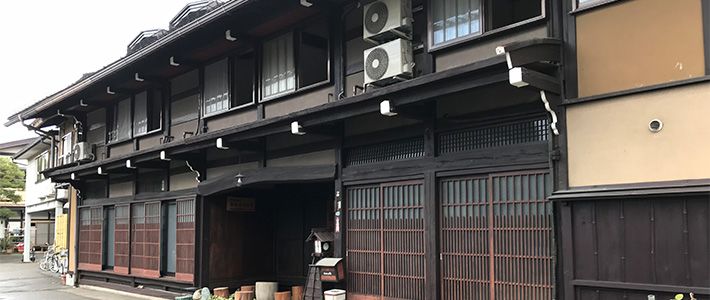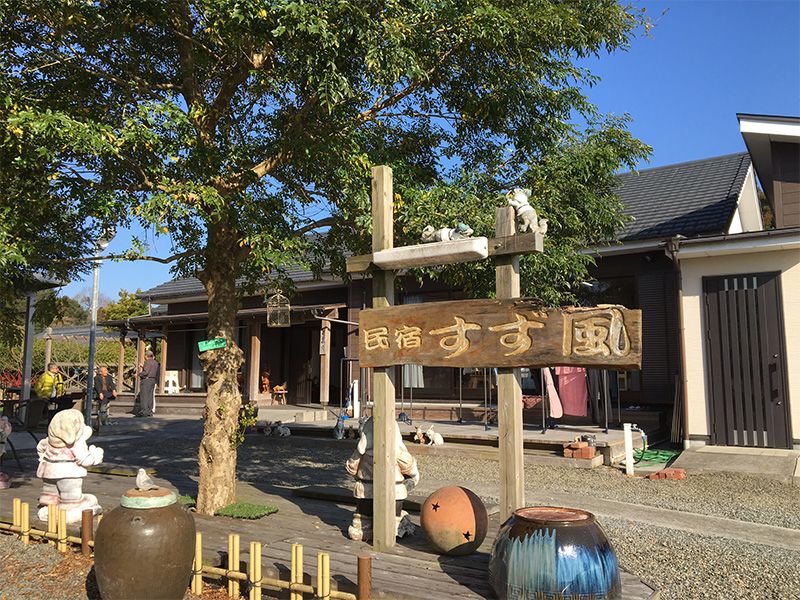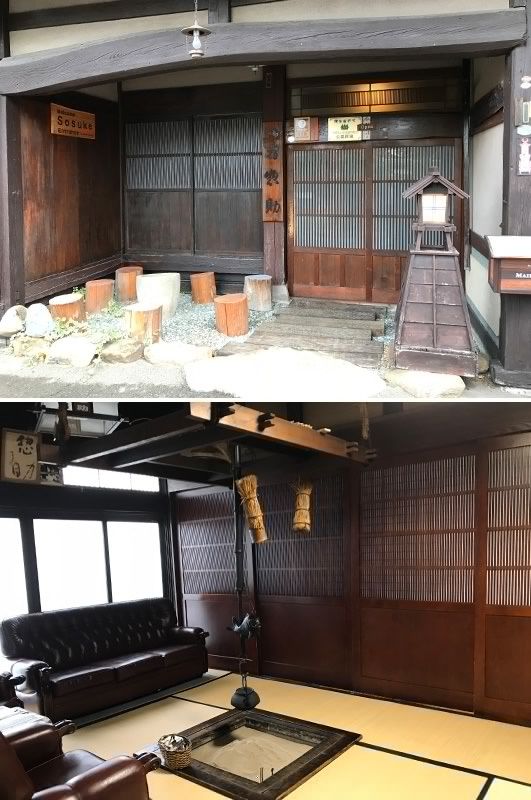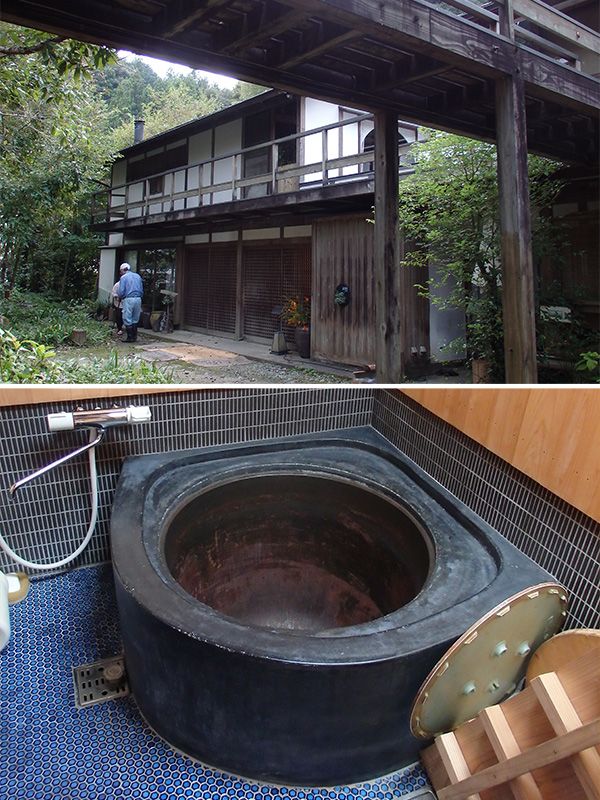
New Trend in Inbound Tourism: Back to Basics with “Minshuku”
Guide to Japan Travel Society Economy- English
- 日本語
- 简体字
- 繁體字
- Français
- Español
- العربية
- Русский
Where Tora-san Stays
The plots of Otoko wa tsurai yo (It’s Tough Being a Man), a popular Japanese film series released from 1969 to 1995, revolve around unlucky-in-love Tora-san, an itinerant peddler of cheap wares. The stories unfold in various picturesque locales, and minshuku, private homes offering no-frills accommodation, are often the setting for Tora-san’s meeting with the lady he falls in love with in each episode.
In the thirty-first installment of the series, released in 1983, titled Tabi to onna to Torajirō (Tora-san’s Song of Love), Tora-san is staying at a minshuku on Sado Island. The owner is an aged woman who rents Tora-san a room on the second floor of her house and cooks his meals in her kitchen. If he wants company, she’ll climb the stairs to sit and chat with him in his room. This style of people passing through and mingling with local inhabitants was the epitome of minshuku hospitality in the “good old days” of Japan 40 or 50 years ago.
Minshuku, often described as Japanese-style bed-and-breakfast inns, are run by families renting out spare rooms in their home. Since minshuku rooms are in private homes, in the old days there were no locks on the doors, and sometimes only fusuma paper sliding doors separated the guest from the family members sleeping in the next room.
Minshuku still exist, although nowadays amenities like locks on the doors are the rule. Guest quarters may be separate from the family’s rooms, but baths and toilets are often still shared. Still, many Japanese today prefer privacy and up-to-date facilities, and old, shabby minshuku are slowly disappearing. But although minshuku may not be top-of-mind among Japanese travelers, demand is emerging from a different market segment: foreign visitors to Japan, who are making up for the drop in Japanese clientele as they look for a novel experience or some old-fashioned warmth and friendliness.
Minshuku Popular with Foreign Visitors
Suzukaze, in the Ariake district of Shibushi, Kagoshima Prefecture, is a minshuku operated by 71-year-old Masuda Sadaaki, who in his younger days stayed at guesthouses around the world during his travels as a backpacker. Masuda started Suzukaze 10 years ago and sleeps under the same roof as his guests.
The prefecture centers on Kagoshima Bay, with the Satsuma peninsula on the west side and the Osumi peninsula on the east. While the Satsuma side of the bay abounds with popular tourist attractions, the Osumi side, where Ariake is located, has fewer such assets. Yet Masuda says that he’s had many foreign guests staying with him since he opened his minshuku. Suzukaze looks appealing, and rooms at this relatively new and tidy-looking building are fully booked until spring.
 Suzukaze is popular for its homey atmosphere. The single-story wooden home has just two guestrooms, both Japanese-style.
Suzukaze is popular for its homey atmosphere. The single-story wooden home has just two guestrooms, both Japanese-style.
Meanwhile, plenty of plain, old-style minshuku have their share of foreign guests. Takayama, in central Japan’s Gifu Prefecture, attracts over 400,000 non-Japanese tourists yearly. The city has several large hotels and well-appointed ryokan, but there are dozens of minshuku too. One of them is Sōsuke, which has operated for 45 years in a 135-year-old traditional minka farmhouse moved from the countryside and re-erected on its current site. Sōsuke has a nostalgic feel, not just because of its age but also for its shared bath and toilets and squeaky floors.
Sōsuke’s 13 rooms are generally fully booked on weekdays by non-Japanese travelers, many of them repeaters. Proprietress Tamai Keiko proudly relates how one Swedish family first visited as a couple. On their second visit, they came with their son, and the son, now a university student, later brought his girlfriend to stay. Tamai also points to a photo of a group of young Australians hanging on a wall. Years later, a guest identified himself as one of those in the photo, taken during a school trip to Japan years earlier.
Things did not always go smoothly when the minshuku first began welcoming foreign tourists. There were culture clashes, with some guests neglecting to take their shoes off indoors, and others not comfortable with the idea of sleeping on the floor. But despite such hiccups, around 30 years ago the number of non-Japanese staying at Sōsuke began to overtake the number of Japanese patrons.
 Sōsuke is popular with foreign travelers to Gifu’s Takayama.
Sōsuke is popular with foreign travelers to Gifu’s Takayama.
Flexibility: The Hallmark of Minshuku
Arriving at a ryokan before the prescribed check-in time, guests may find the reception desk unattended. It’s often the case that staff are not yet on duty, and guests will not be offered their room before the appointed time. This may be an extreme example, but many Japanese-style lodgings tend to be inflexible about their rules. Sōsuke, on the other hand, is more flexible, and proprietress Tamai offers a few examples: “Our check-in time is three in the afternoon, but one time, guests from Hong Kong appeared on the doorstep at nine in the morning. Their room was being cleaned and wasn’t ready yet, so I couldn’t show them in, but I said they were welcome to leave their luggage while they went off sightseeing. In another case, a guest from the UK arrived at one in the afternoon, but the room was ready so I showed her in right away.”
It’s this kind of flexibility that appeals to many minshuku users. The human warmth and go-with-the-flow attitude of their proprietors are quite different from the by-the-book methods common at most Japanese hotels and ryokan.
Although not actually a minshuku, Fujinobō Kaen, a hotel near Mount Fuji in Shizuoka Prefecture, has also won success with its tourist clientele by making flexibility its byword. Owner Xue Sentang, a native of Taiwan, describes the constraints in traditional ryokan operation that are often a factor in their lack of flexibility.
“Many Japanese inns are strict about mealtimes because of their staff’s duty hours. This doesn’t tend to bother Japanese, who are used to traveling according to a set schedule, but non-Japanese assume that meals will be served whenever they like. We have found that tour groups from China or Thailand, especially, often don’t stick to their schedules and fail to arrive by mealtime, so it’s up to us to work around this as best we can.
“We give our guests value by providing service that goes beyond set rules and procedures,” continues Xue. “No matter how late a tour bus arrives, we make a point of always providing travelers with a hot meal.” Fewer tour groups have been traveling to Japan lately, but Fujinobō Kaen’s occupancy rate has remained steady thanks to this kind of attention.
Human Warmth the Key to Success
Japan’s Ministry of Agriculture has begun to encourage inbound travelers to stay at minshuku in rural areas, seeing this as a valuable opportunity for revitalizing regional economies.
Professor Nakao Seiji of the University of Fukuchiyama is Japan’s foremost authority on minshuku. According to him, minshuku in rural communities offer the best of Japan as it was 40 or 50 years ago. The standard model is a small establishment, a private home taking in paying guests, run to supplement the owner’s farming or fishing income. Small mountain or seaside settlements are ideal for enjoying local delicacies, an essential part of the minshuku experience. In Nakao’s words, “At a minshuku, the point is to be open to chatting with the proprietor and soaking up the local atmosphere. It’s different than staying at a resort with family or friends.”
At large hotels or ryokan, staff are generally too busy to spend time having meaningful interactions with guests, and trying to engage staff in conversation often elicits only rote answers. In addition, many Japanese are rather reserved and uncomfortable engaging in casual conversation with strangers. They may also be nervous about talking with foreign visitors, perhaps because of a lack of confidence in their foreign language skills. But friendly chat is part of the enjoyment of a minshuku stay.
Kokuriko, a minshuku in Uchiko, Ehime Prefecture, features a goemonburo, a large iron receptacle that serves as a bathtub, in its own building in the garden. This old-style bath is a unique way of enjoying a soak, but even better is the conversation with owner Morinaga Teruhiro, who loves to talk about the local area.
 Farm Inn Raum Kokuriko is in a rural area of Ehime Prefecture. A small building in the garden (bottom photo) houses a goemonburo bath.
Farm Inn Raum Kokuriko is in a rural area of Ehime Prefecture. A small building in the garden (bottom photo) houses a goemonburo bath.
Morinaga knows how to entertain guests, talking enthusiastically about unusual nuts he came across in the forest or encouraging visitors to write letters on tree leaves or otherwise commune with nature. Guests are welcome to go up to the second floor of the building, which features a collection of crafts created by local people. His wife Reiko also engages guests in conversation. She says she will invite anyone who looks as though they’d like to talk to sit and have a cup of tea. “I don’t speak English well, so I can’t discuss complicated issues with foreign guests, but I like to think that, on some level, we’re communicating.” This spirit of hospitality is part of Kokuriko’s appeal.
Competing on Warmth and Human Spirit
But business for lodging operators like Sōsuke in Takayama is not all smooth sailing. In that city, there has been a sharp increase in the number of minshuku, guest houses and other small establishments since 2015; in 2016, their number had grown to 489, up 92 from the previous year. The struggle for a share of the accommodation pie has also been aggravated by the proliferation of minpaku, paid home-sharing arrangements in private homes or apartments, and some minshuku operators say that their occupancy rates have dropped. Despite the business opportunity offered by the increase in inbound tourists, some minshuku have closed after their proprietors decided they were too old to carry on, had difficulty finding successors to run the establishment, or felt daunted at having to communicate with guests in foreign languages. Renovating premises or advertising more widely may be effective in some cases, but when money is tight, it’s difficult to decide to invest in upgrading outdated décor or facilities.
But a change of mindset might be in order here to encourage minshuku owners to focus less on cosmetic changes to overcome these challengeas. Says Takayama mayor Kunishima Michihiro: “The residents of this city are the asset we have for profiting from inbound tourism.” In other words, Takayama shouldn’t depend on its picturesque atmosphere or onsen hot springs: local residents should learn how to communicate better with foreign visitors.
Today, visitors to Japan are often viewed just as high-spending tourists, and sadly, people-to-people exchanges aren’t given the importance they deserve. What’s more, with so many operators now crowding the market for accommodations, the human touch is the only way for minshuku, small in scale, to survive. Tora-san films are enduringly popular because of the warmth of the interaction they depict, something that people may have little time for nowadays. Going back to basics can surely help minshuku survive. No matter that some owners may be tongue-tied, feel awkward around foreigners, or speak little English—plain human kindness toward travelers, at which minshuku excel, can help make Japan a true international tourist destination.
(Originally posted in Japanese on January 4, 2018. Banner photo: Sōsuke, a minshuku in Takayama, Gifu Prefecture. Photos provided by Himeda Konatsu.)